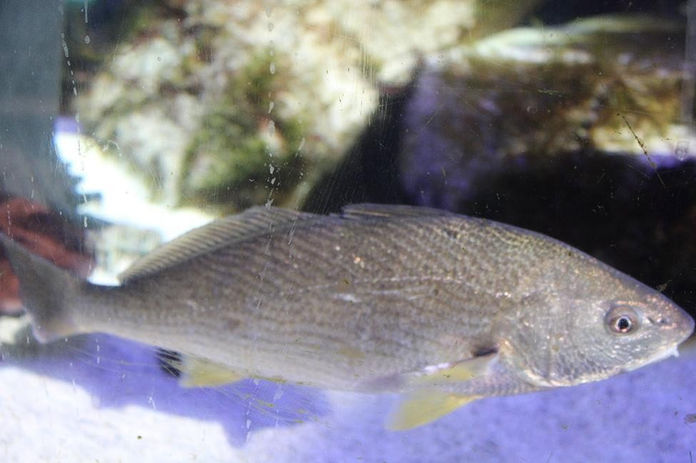Yellowfin Croaker
(Umbrina roncador)
Population status in the wild: Least Concern
The Yellowfin Croaker is a species of fish found along the coasts of the eastern Pacific Ocean, from central California down to Baja California, Mexico. This species is named for its vibrant yellow fins, particularly its long, slender pelvic and anal fins, which stand out against its silvery body. The Yellowfin Croaker has a streamlined, elongated body with a silver to olive-green coloration on the back, fading to a lighter belly. It can grow up to 20 inches in length, though individuals averaging 10 to 12 inches are more commonly found.
Yellowfin Croakers are bottom-dwelling fish that typically inhabit sandy and muddy coastal areas, including estuaries, shallow bays, and surf zones. They are known for their distinct croaking sound, which is produced by vibrations of the swim bladder, and are often heard during the breeding season. These fish primarily feed on small invertebrates such as worms, crustaceans, and mollusks, which they dig for in the sand. They use their specialized barbels near their chin to detect prey buried in the substrate. In aquariums, they are typically fed a diet of small fish, shrimp, and other invertebrates.
The Yellowfin Croaker is a relatively social species, often found in small schools, especially during the warmer months. These fish are primarily active during the night, foraging for food on the ocean floor and avoiding predators by staying close to the substrate. During the day, they tend to remain buried in the sand or mud, leaving only their heads exposed. They are also known to migrate within their habitat, moving between shallow and deeper waters in search of food and optimal breeding conditions.
The species has a lifespan of about 4 to 5 years in the wild. While the Yellowfin Croaker is currently classified as Least Concern, its populations can be affected by habitat degradation, pollution, and overfishing in certain areas. Conservation efforts aimed at preserving coastal ecosystems and reducing fishing pressures are important for ensuring the long-term health of this species.
Fun Facts:
The Yellowfin Croaker is known for the croaking sound it produces, which is created by vibrating its swim bladder, a characteristic feature of the species.
These fish are excellent at using their barbels to detect food buried in the sand, which makes them effective predators in their coastal habitats.
%20(1).jpg)

